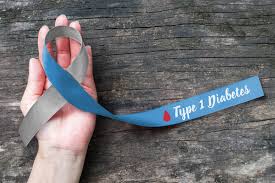Type 1 Diabetes and What to Know
Although there are many similarities between type 1 and type 2 diabetes, the cause of each is very different. And the treatment is usually quite different, too. Some people, especially adults who are newly diagnosed with type 1 diabetes, may have symptoms similar to type 2 diabetes and this overlap between types can be confusing. Take our Risk Test to find out if you are at increased risk for having type 2 diabetes.
In people with type 1 diabetes, the onset of symptoms can be very sudden, while in type 2 diabetes, they tend to come about more gradually, and sometimes there are no signs at all.
Symptoms sometimes occur after a viral illness. In some cases, a person may reach the point of diabetic ketoacidosis (DKA) before a type 1 diagnosis is made. DKA occurs when blood glucose is dangerously high and the body can't get nutrients into the cells because of the absence of insulin. The body then breaks down muscle and fat for energy, causing an accumulation of ketones in the blood and urine. Symptoms of DKA include a fruity odor on the breath, heavy, taxed breathing and vomiting. If left untreated, DKA can result in stupor, unconsciousness, and even death.
People who have symptoms—of type 1 or of DKA—should contact their health care provider immediately for an accurate diagnosis. Keep in mind that these symptoms could signal other problems, too.
Some people with type 1 have a "honeymoon" period, a brief remission of symptoms while the pancreas is still secreting some insulin. The honeymoon phase usually occurs after someone has started taking insulin. A honeymoon can last as little as a week or even up to a year. But it’s important to know that the absence of symptoms doesn't mean the diabetes is gone. The pancreas will eventually be unable to secrete insulin, and, if untreated, the symptoms will return.
Common symptoms of diabetes are:
Urinating often
Feeling very thirsty
Feeling very hungry even though you are eating
Extreme fatigue
Blurry vision
Cuts and bruises that are slow to heal
Weight loss even though you are eating more (type 1)
Tingling, pain, or numbness in the hands or feet (type 2)
Having the right information at your fingertips is important to improve your quality of life after being diagnosed with diabetes. For more helpful information on dieting, exercise, diabetic supplies visit www.mydiabeticlife.blog.


Comments
Post a Comment